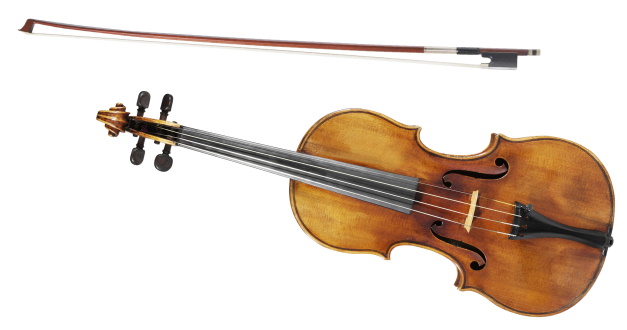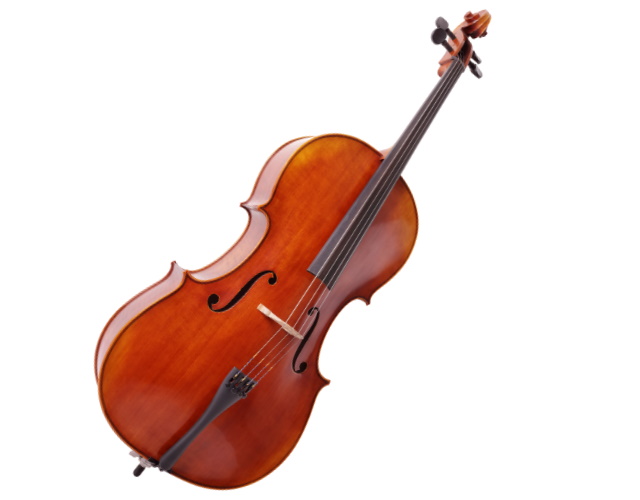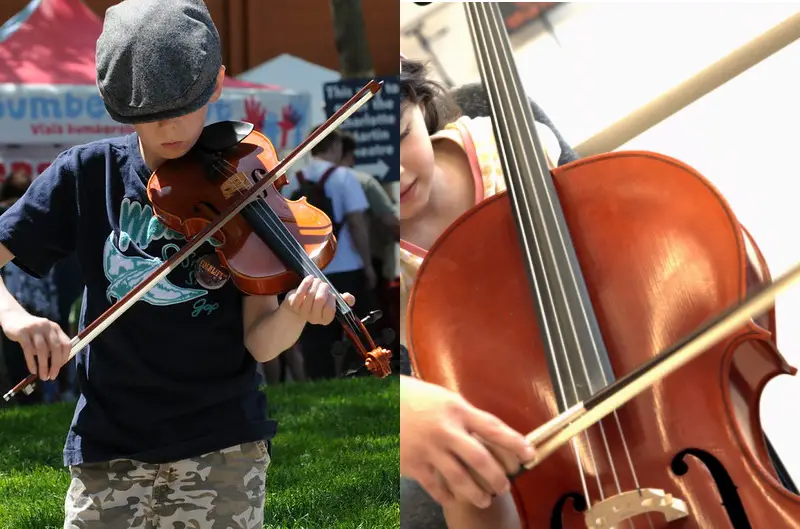Your child has indicated that he would like to learn a string instrument and is considering either the violin or the cello. Which of these two instruments is a better choice for your child?
Although the cello requires more physical strength from a child and is more cumbersome to carry, a child learner will generally obtain a rewarding sound right away unlike on a violin. The cello also has a more natural playing position, and young cellists are generally in demand for orchestras.
Aspects that you and your child need to consider are, for each instrument, the learning curve, the sound, the physical challenges, and the future musical opportunities for a child violinist and cellists.
As a parent, you also likely need to look at practical issues like transporting the instrument and the costs involved.
Table of Contents
Verify your child’s preference
Before deciding whether your child should learn the violin or the cello, you have to be convinced that your child really wants to play a string instrument. If that is established, you can discuss the instrument options with your child.
Always keep in mind that your child must like the sound of the instrument s/he wants to learn. Lessons and practice sessions can be disastrous if your child doesn’t like the sound of the instrument. Try to find out which string instrument’s sound is his/her favorite.
It might be a good idea to let your child frequently listen to the different string instruments before the final choice is made. If possible, take him to a concert or music school where he can see and hear the different instruments.
Sometimes, a child immediately favors a specific instrument, but if this isn’t the case, let him explain if s/he favors the higher and more cheerful violin, or the deeper and rich cello sound.
Physical challenges for a child learning cello and violin

Your child’s physical build and strength can have a decisive influence on whether it will be violin or cello.
Physical challenges of the cello
With the cello, physical strength is required to get a good sound. You need upper body and right arm strength to produce the required different dynamics with the bow.
As the cello is in an almost vertical position when being played, the cellist has to use arm and hand strength to keep the bow in place on the strings.
The cellist’s left hand also has to be strong to press hard on the strings. The left hand also has to stretch to cover the longer fingerboard. The longer your child’s fingers, the better.
It is also hard to play fast on a cello while keeping the sound controlled. This is due to the longer fingerboard and difficult bowing technique.
Luckily, to make it easier for young children to master the techniques needed, cellos are available in smaller sizes. If you and your child have chosen the cello as the instrument to learn, your child must start learning on a cello fit for his length.
To figure out what cello size is correct for your kid, the rule of thumb is to measure your child’s back and match it to a specific cello size:
| Cello size | Child’s back measurement |
| One-eighth | 17” – 20” |
| Quarter | 20” – 23” |
| Half | 23” – 26” |
| Three-quarters | 26” – 28” |
| Seven-eighths | 28”- 30” |
| Full | 30” and more |
Physical challenges of the violin
The young violinist needs less physical strength to play than the cellist. As a result of the almost horizontal position the violin is held when being played, the violinist relies on gravity to give the bow the necessary weight to produce a sound.
As with the cello, there are smaller violin sizes available for smaller children. Your child should start learning on a violin fit for the length of his arms. To determine the violin size, measure your child’s arm from the neck up to the hand.
| Violin size | Child’s arm measurement |
| One-eighth | 16” |
| Quarter | 18” |
| Half | 20” |
| Three-quarters | 22” |
| Full | 23” and more |
There are also more sizes, but they are not used very often.
Small cellos sound better than small violins
In the beginning, child cello learners generally enjoy the lessons and practice sessions more than the violin as they get a feeling of success much earlier. Even the smallest cello produces an acceptable sound from almost the first lesson, similar to the melancholy sound of a full sized cello.
A small size violin is too small for its acoustical range, so its sound is always softer and not like a full-size one. It also takes quite a long time before an acceptable, nice sound can be produced by a beginner.
Is cello or violin easier to learn for a child?

As both the cello and violin are string instruments, they have many similar characteristics and playing techniques.
Both the cello and violin have no keys or marks to indicate where to place your finger on the string to produce a specific note. With both instruments, a child’s ears have to be trained to determine the correct pitch.
On both the cello and the violin, It’s also hard to master bow techniques with the right hand, while the left hand seeks to find the right harmonic positions on the strings.
It can take quite a long time to get used to two hands engaging in completely different types of movement simultaneously.
Despite the similarities, there are many differences between the two instruments which have to be discussed between you and your child. Some of the differences make it easier to learn the cello, while others make the violin the easier one:
| Cello | Violin |
| Easily be kept in position with the endpin on the floor. | Instrument under the chin feels awkward at first. |
| Natural position to hold the instrument. | Less natural position to hold the violin. |
| Bow playing needs a strong right arm. | Bow utilizes gravity to touch the strings. |
| The neck is long and the left hand has to stretch. | Shorter neck and the left hand’s position is more natural. |
| A “forgiving” instrument for beginners. | Less “forgiving” instrument for young beginners. |
| Advanced cellists, generally, learn three clefs. | violinists only need to learn one clef. |
| More complex fingering. | Less complex fingering. |
| Generally, children start at age 6-7 with lessons. | Many children start with lessons when younger than 6. |
| Can play the melody and other voices in ensembles. | Generally, plays only the melody part in an ensemble. |
Such differences might make one instrument more attractive to start with than the other. But in the end, your child’s preference should to a great extent be the deciding factor.
Opportunities for cello and violin child players to make music with others
When your child has reached a certain standard as violin or cello player, there are many opportunities in most cities and towns to participate in youth ensembles and orchestras.
Although there are generally only 12 cellos in a symphony orchestra, cellists are always in demand as not so many children are playing the cello. While more children are playing the violin, there are 30 to 40 violins in an orchestra. Whether your child is a violinist or cellist, there will be opportunities to play with others.
Both the young violinist and cellist enhance their playing skills by making music with others. Right at the beginning, most teachers put small string ensembles together where every beginner plays a short section or few notes to get the satisfaction of being part of a larger group.
These ensembles give direction and purpose even for the beginner and make lessons and practice sessions more interesting.
As your child’s playing ability increases, you can approach churches or community groups to find out whether small ensembles are needing permanent or ad-hoc players.
Cello or violin for a child: other aspects to consider
There are also a few non-musical aspects to consider when trying to decide between the violin or the cello for your child.
Cello vs violin size, weight, and transport
Cellos, even the smaller versions, are bulky instruments with bulky cases. They are not so heavy – since they have a hollow body – but are difficult to transport. Many car trunks are too small to accommodate a cello case.
Carrying a cello when walking or taking a bus to school is also a hassle – children often hate taking lugging their cello to school.
The violin is a lot more portable. The child can easily carry it around and take it to lessons and school. Unlike a cello, you can take a violin as hand luggage on a flight.
Cost of cello vs violin for a child
Generally speaking, the cello is a more expensive instrument to purchase and to maintain. On average a good violin is cheaper to purchase than a cello. If you need to replace the bow or strings, the cello’s accessories are also more expensive than the violin’s.
To give you an indication of price differences, the following table show some of the lowest prices in the US:
| Size | Violin | Cello |
| Full | $280 | $1,250 |
| ¾ | $270 | $1,000 |
| ½ | $260 | $720 |
| Bow | $20 | $25 |
| Set of strings | $20 | $30 |
Instruments for professionals are much more expensive, but the differences in percentage between violin and cello are generally comparable to the above.
You should typically avoid purchasing the smaller sizes for your chosen instrument since your child will “outgrow” it and you’ll soon end up having to buy the next size. Most music schools and music shops have systems in place where you can rent the smaller instruments.
Here again, renting a cello rent generally is costlier than a violin. You can rent a ¾-violin from $15 per month, while a ¾-cello will cost you anything from $35 per month.
***
Photo credits:
Featured image:
“Child street performer with violin 1” (Public Domain) by D Coetzee
“’Cello Beginner” (CC BY 2.0) by Steve Snodgrass

